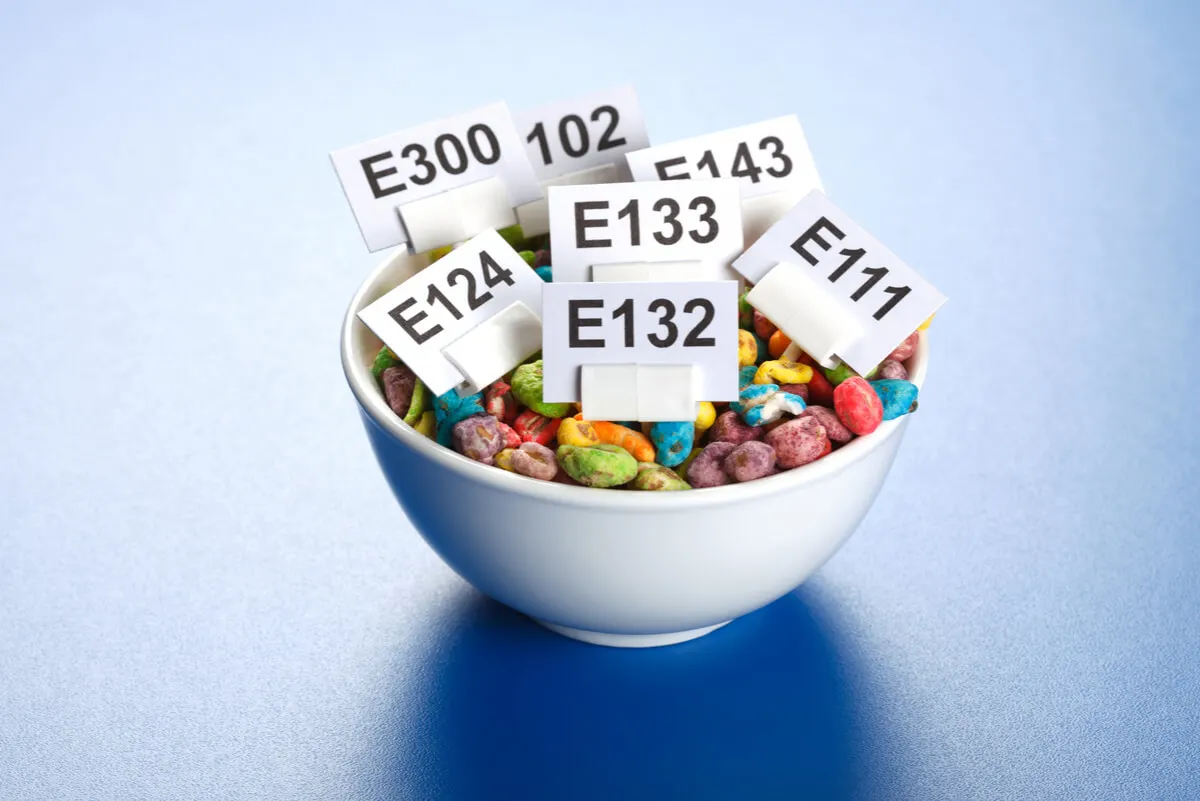What Are Food Stabilizers?


Written and verified by the nutritionist Saúl Sánchez Arias
Food stabilizers are a series of additives that are frequently used in industrial products to improve their organoleptic characteristics. They can be natural or synthetic, and are usually considered to be quite safe for health.
As a general rule, they prevent the separation of emulsions, foams and suspensions into their individual components. In this way, the viscosity of the end result is increased.
Before we start, we should point out that it’s important to prioritize the presence of fresh food in our diet. These foods have a high nutritional density, which makes it possible to meet daily requirements. It’s essential to avoid deficits, as in the medium term this could lead to the development of chronic and complex pathologies that could negatively affect well-being.
How do food stabilizers work?
As we have already mentioned, stabilizers prevent the separation of the components of emulsions. Thanks to them, the amount of free water is reduced, in such a way that they absorb part of the liquid and increase the density of the product. The result will always be more viscous. They’re normally used to ensure balance over time in terms of texture.

However, in some cases, the healthiness of these compounds has been questioned. The truth is that, in order to guarantee that they don’t produce harmful effects, the EFSA carries out certain investigations from time to time.
All substances that fall into the category of food additives undergo a series of rigorous controls and analyses to guarantee that they can be included in the diet on a regular basis.
Even so, there are disagreements about some of these compounds. The ones that generate the most debate are those included in the group of artificial sweeteners. It has been shown that they negatively affect the microbiota, reducing its density and diversity. This could increase the risk of suffering internal inflammation-related conditions in the medium term, or of experiencing digestive problems that condition the use of nutrients.
You may be interested in: Food Additives; Allergies, Symptoms, and Treatments
What are the most commonly used food stabilizers?
The food stabilizers and additives used in a product must be mentioned on the labeling. Usually, a nomenclature using a letter and numbers is used to designate them.
The most frequent in the context of stabilizers are agar agar and guar gum. They can act as fiber and don’t produce any problems in our bodies in the medium term. They may even have the capacity to help reduce constipation.

Fibers increase the volume of the fecal bolus, thus achieving a greater activation of the mechanoreceptors of the digestive tube. This results in more intense peristaltic movements, which facilitates the descent of the stool.
A study published in the BMJ corroborates this. On the other hand, part of the fiber serves as an energy substrate for the bacteria that make up the microbiota. This stimulates their growth.
You may also be interested in: Nitrite Additives in Hot Dogs are Carcinogenic
Natural and artificial food stabilizers
Within the group of food stabilizers, we can find natural compounds and others that have been synthetically designed in a laboratory. Among the best-known natural stabilizers are pectins and alginic acid. Experts believe that they don’t produce negative health effects, although, in certain people with inflammatory intestinal problems, they could be bad for them.
If you experience any digestive symptoms after repeated consumption of a processed product with stabilizers, it’s best to consult a specialist. You may be suffering from a pathology such as irritable bowel syndrome. In this case, the most appropriate thing could be to start a diet low in residues and fiber, since there’s evidence that this could help to deal with the problem.
Another possibility is that you’re allergic to the element in question. Should this occur, the additive may need to be removed from the diet altogether, as it could lead to greater problems. However, the symptoms are usually significant when such a process is initiated.
Stabilizers: food additives that improve food texture
As you have seen, stabilizers are a series of compounds that are included in the group of additives and are used to achieve a better texture and density in certain foods of industrial origin.
In general terms, it’s advisable not to abuse this type of foodstuff, as they don’t always have good quality from a nutritional point of view. It’s always better to promote the presence of fresh food in the diet, which can provide vitamins, minerals, and antioxidant compounds.
Finally, we must emphasize that food additives aren’t always artificial, but are often extracted from plants or elements present in nature.
This will always be a better option, as the risk of experiencing side effects after consumption will be much lower. Also, it will be less likely that you’ll end up developing a process of hypersensitivity to them, such as allergies or intolerances.
All cited sources were thoroughly reviewed by our team to ensure their quality, reliability, currency, and validity. The bibliography of this article was considered reliable and of academic or scientific accuracy.
- Suez, J., Korem, T., Zeevi, D., Zilberman-Schapira, G., Thaiss, C. A., Maza, O., Israeli, D., Zmora, N., Gilad, S., Weinberger, A., Kuperman, Y., Harmelin, A., Kolodkin-Gal, I., Shapiro, H., Halpern, Z., Segal, E., & Elinav, E. (2014). Artificial sweeteners induce glucose intolerance by altering the gut microbiota. Nature, 514(7521), 181–186. https://doi.org/10.1038/nature13793
- Tabbers, M. M., & Benninga, M. A. (2015). Constipation in children: fibre and probiotics. BMJ clinical evidence, 2015, 0303.
- Bellini, M., Tonarelli, S., Nagy, A. G., Pancetti, A., Costa, F., Ricchiuti, A., de Bortoli, N., Mosca, M., Marchi, S., & Rossi, A. (2020). Low FODMAP Diet: Evidence, Doubts, and Hopes. Nutrients, 12(1), 148. https://doi.org/10.3390/nu12010148
This text is provided for informational purposes only and does not replace consultation with a professional. If in doubt, consult your specialist.








